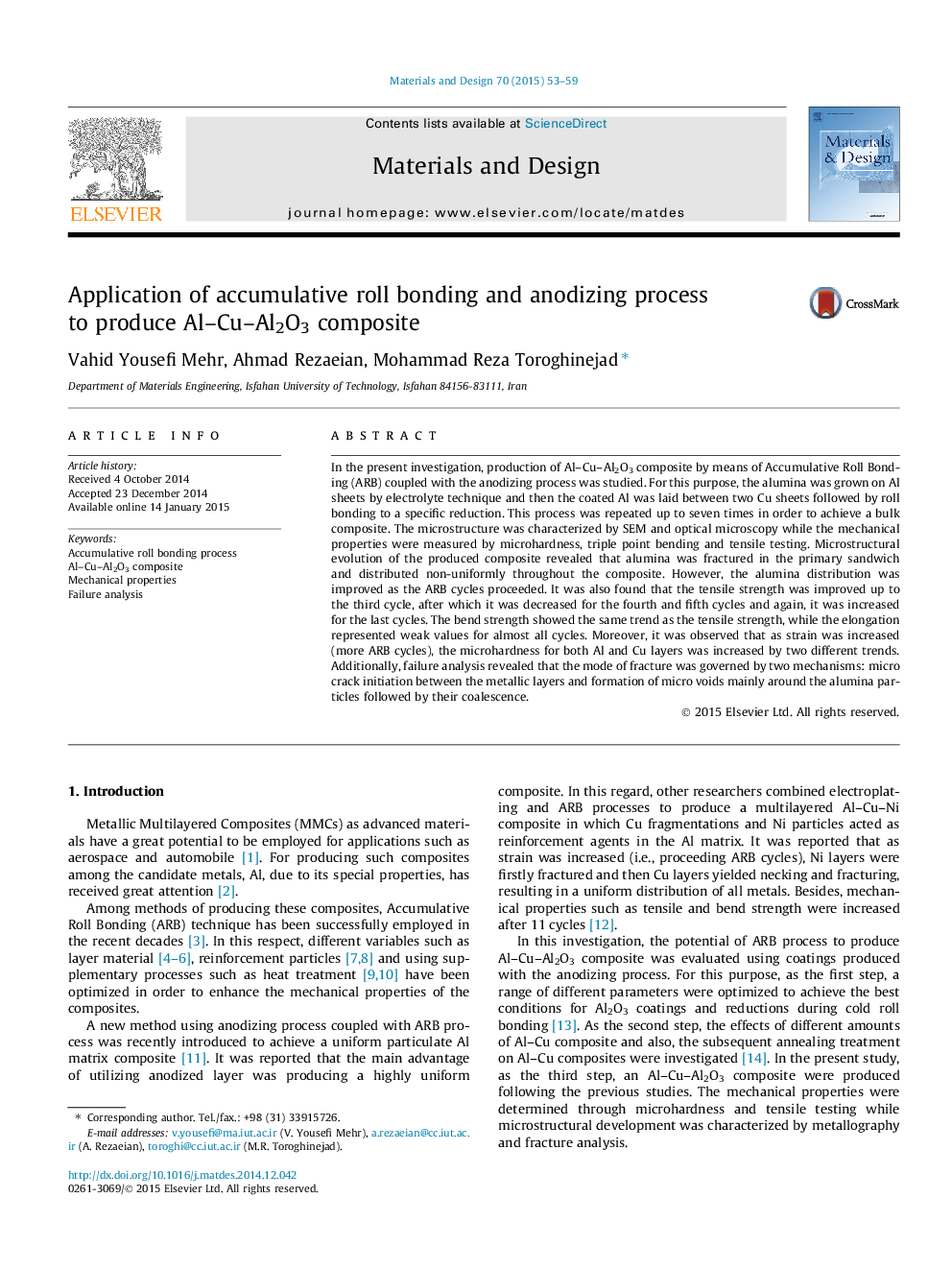| کد مقاله | کد نشریه | سال انتشار | مقاله انگلیسی | نسخه تمام متن |
|---|---|---|---|---|
| 828678 | 1470327 | 2015 | 7 صفحه PDF | دانلود رایگان |
• For Al–75.5%Cu–3%Al2O3, Cu layers started to neck and fracture at the third cycle.
• For Al–21.5%Cu–3%Al2O3 composite, a better distribution of all phases was observed.
• Microhardness for Cu layers was greater for all cycles as compared with Al layers.
In the present investigation, production of Al–Cu–Al2O3 composite by means of Accumulative Roll Bonding (ARB) coupled with the anodizing process was studied. For this purpose, the alumina was grown on Al sheets by electrolyte technique and then the coated Al was laid between two Cu sheets followed by roll bonding to a specific reduction. This process was repeated up to seven times in order to achieve a bulk composite. The microstructure was characterized by SEM and optical microscopy while the mechanical properties were measured by microhardness, triple point bending and tensile testing. Microstructural evolution of the produced composite revealed that alumina was fractured in the primary sandwich and distributed non-uniformly throughout the composite. However, the alumina distribution was improved as the ARB cycles proceeded. It was also found that the tensile strength was improved up to the third cycle, after which it was decreased for the fourth and fifth cycles and again, it was increased for the last cycles. The bend strength showed the same trend as the tensile strength, while the elongation represented weak values for almost all cycles. Moreover, it was observed that as strain was increased (more ARB cycles), the microhardness for both Al and Cu layers was increased by two different trends. Additionally, failure analysis revealed that the mode of fracture was governed by two mechanisms: micro crack initiation between the metallic layers and formation of micro voids mainly around the alumina particles followed by their coalescence.
Journal: Materials & Design - Volume 70, 5 April 2015, Pages 53–59
